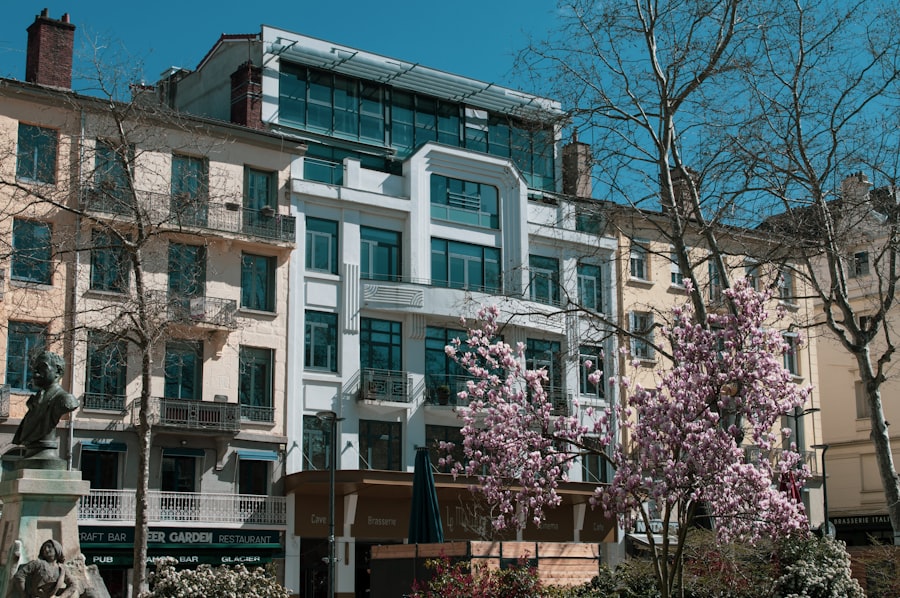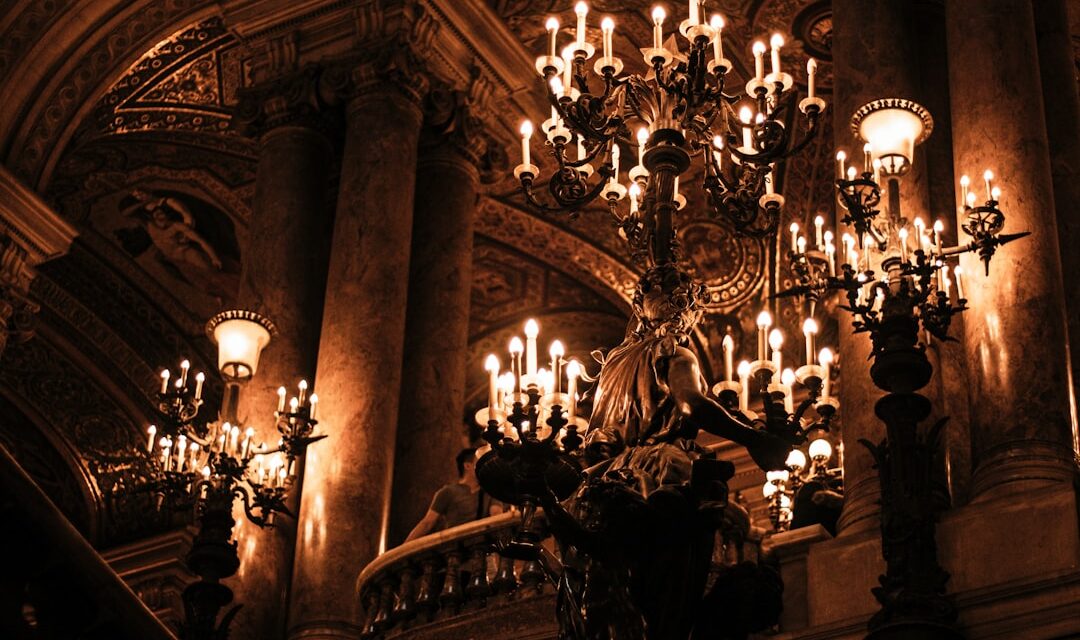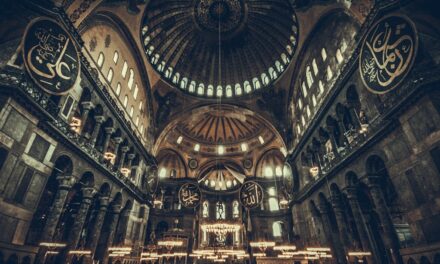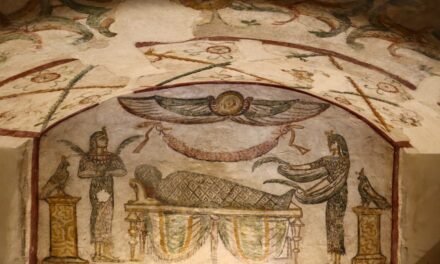Art Deco, a style that emerged in the 1920s and 1930s, was a response to the austerity and minimalism of the preceding Art Nouveau movement. The term “Art Deco” is derived from the 1925 Exposition Internationale des Arts Décoratifs et Industriels Modernes in Paris, where the style was first showcased. The movement was influenced by a variety of sources, including the bold geometric forms of Cubism, the sleek lines of modern technology, and the exotic motifs of ancient cultures.
Art Deco was also a reflection of the optimism and prosperity of the Roaring Twenties, with its emphasis on luxury, glamour, and modernity. Art Deco was a truly international movement, with influences from around the world. In America, it was influenced by the skyscrapers of New York City and the streamlined designs of industrial machinery.
In Europe, it drew inspiration from the ancient art of Egypt, Greece, and Rome, as well as from the vibrant colours and patterns of African and Asian art. The movement also embraced new materials and technologies, such as chrome, glass, and plastic, which allowed for the creation of sleek and futuristic designs. Overall, Art Deco was a celebration of modernity and progress, with a focus on bold shapes, rich colours, and lavish ornamentation.
Summary
- Art Deco originated in the 1920s and 1930s, following the Art Nouveau movement and influenced by various global cultures and artistic styles.
- Characteristics of Art Deco include geometric shapes, bold colours, and luxurious materials, reflecting the modernity and glamour of the era.
- Art Deco had a significant influence on architecture, with its emphasis on sleek, streamlined forms and decorative elements, seen in iconic buildings such as the Chrysler Building in New York City.
- In interior design, Art Deco is characterised by its use of rich materials, such as marble and exotic woods, as well as its emphasis on symmetry and opulent furnishings.
- Art Deco had a major impact on fashion, with its sleek silhouettes, intricate beading, and bold patterns, influencing designers such as Coco Chanel and Jean Patou.
- Art Deco also left its mark on graphic design, with its use of bold typography, geometric shapes, and stylised imagery, influencing poster art, advertising, and packaging design.
- The legacy of Art Deco can be seen in the continued popularity of its aesthetic, as well as its lasting impact on the worlds of art, design, and architecture.
Characteristics of Art Deco
Common Motifs and Influences
Common motifs include sunbursts, chevrons, zigzags, and stepped forms, which reflect the influence of ancient cultures and modern technology.
Luxurious Materials and Colours
Art Deco also makes use of luxurious materials such as marble, brass, and exotic woods, as well as vibrant colours such as gold, silver, and jewel tones. The style is known for its emphasis on verticality and the use of stepped forms, which evoke the image of skyscrapers and modern machinery.
Intricate Detailing and New Technologies
The style often features intricate detailing, such as stylized floral motifs, sunburst patterns, and exotic animal prints. These decorative elements add a sense of luxury and glamour to Art Deco designs. Another characteristic of Art Deco is its embrace of new materials and technologies. The style makes use of industrial materials such as chrome, glass, and plastic, as well as new manufacturing techniques such as mass production and assembly line production. This allowed for the creation of sleek and streamlined designs that were both modern and affordable.
Influence on Architecture

Art Deco had a significant influence on architecture around the world, particularly in the design of skyscrapers, public buildings, and private residences. In America, the style was embraced by architects such as William Van Alen, who designed the iconic Chrysler Building in New York City. The building’s sleek lines, metallic finishes, and intricate ornamentation are classic examples of Art Deco architecture.
Similarly, in Europe, Art Deco influenced the design of public buildings such as the Palais de Tokyo in Paris and the Battersea Power Station in London. These buildings feature bold geometric forms, lavish ornamentation, and a sense of modernity that is characteristic of Art Deco. Art Deco also had a lasting impact on residential architecture, with its influence seen in the design of apartment buildings and private homes.
The style’s emphasis on luxury and glamour is evident in the use of high-quality materials such as marble, brass, and exotic woods. Art Deco buildings often feature grand entrances, elaborate facades, and decorative details that add a sense of opulence to the design. Overall, Art Deco architecture is known for its bold geometric forms, lavish ornamentation, and sense of modernity, making it a lasting influence on architectural design.
Art Deco in Interior Design
Art Deco had a profound impact on interior design, with its influence seen in the design of furniture, lighting, textiles, and decorative arts. The style is known for its emphasis on luxury and glamour, with a focus on high-quality materials and intricate detailing. Art Deco furniture often features sleek lines, geometric shapes, and exotic woods such as ebony and mahogany.
The use of luxurious materials such as marble, brass, and lacquer adds a sense of opulence to Art Deco interiors. Lighting fixtures are another important aspect of Art Deco interior design, with designs that feature bold geometric forms and intricate detailing. In addition to furniture and lighting, Art Deco also influenced the design of textiles and decorative arts.
Textiles often feature bold patterns and vibrant colours that reflect the influence of ancient cultures and modern technology. Decorative arts such as ceramics, glassware, and metalwork also embrace the bold geometric forms and lavish ornamentation that are characteristic of Art Deco. Overall, Art Deco interior design is known for its emphasis on luxury, glamour, and modernity, with a focus on high-quality materials and intricate detailing that add a sense of opulence to the design.
Art Deco in Fashion
Art Deco had a significant influence on fashion during the 1920s and 1930s, with its emphasis on luxury, glamour, and modernity reflected in the design of clothing and accessories. The style is known for its sleek lines, bold geometric shapes, and lavish ornamentation. Women’s fashion embraced the streamlined silhouette of the flapper dress, with its dropped waistline and loose fit.
The use of luxurious materials such as silk, satin, and velvet added a sense of opulence to Art Deco fashion. Accessories such as beaded handbags, long pearl necklaces, and feathered headbands were also popular during this time. Men’s fashion also embraced the sleek lines and bold geometric shapes that are characteristic of Art Deco.
Suits featured narrow lapels, high-waisted trousers, and sharp tailoring that reflected the influence of modern technology. Accessories such as cufflinks, tie pins, and fedora hats added a sense of sophistication to men’s fashion during this period. Overall, Art Deco fashion is known for its emphasis on luxury, glamour, and modernity, with a focus on sleek lines, bold geometric shapes, and lavish ornamentation that added a sense of opulence to clothing and accessories.
Art Deco in Graphic Design

The Style’s Distinctive Features
The style is known for its use of symmetrical designs, repeating patterns, and stylised lettering that reflect the influence of ancient cultures and modern technology.
Posters and Advertisements
Posters often featured bold graphics and vibrant colours that captured the energy and optimism of the Roaring Twenties. Advertisements embraced sleek lines and bold typography that reflected the influence of modern machinery.
Packaging and Materials
In addition to posters and advertisements, Art Deco also influenced the design of packaging for consumer goods such as cosmetics, cigarettes, and alcohol. Packaging often featured bold graphics and vibrant colours that reflected the influence of ancient cultures and modern technology. The use of luxurious materials such as gold foil and embossed lettering added a sense of opulence to Art Deco packaging.
Legacy of Art Deco
Art Deco has left a lasting legacy on art, design, and architecture around the world. The style’s emphasis on luxury, glamour, and modernity continues to inspire designers today. Its bold geometric shapes, sleek lines, and lavish ornamentation have been embraced by contemporary designers who seek to capture the energy and optimism of the Roaring Twenties.
In addition to its influence on art and design, Art Deco has also become an enduring symbol of an era marked by progress and prosperity. The legacy of Art Deco can be seen in contemporary architecture that embraces bold geometric forms and sleek lines. It can also be seen in interior design that embraces luxury materials such as marble, brass, and exotic woods.
In fashion, designers continue to be inspired by the sleek lines and bold geometric shapes that are characteristic of Art Deco. In graphic design, the influence of Art Deco can be seen in posters that embrace bold graphics and vibrant colours. Overall, Art Deco continues to be a source of inspiration for designers who seek to capture the energy and optimism of an era marked by progress and prosperity.
Its emphasis on luxury materials such as marble brass exotic woods continues to inspire contemporary designers who seek to create designs that are both modern affordable luxurious glamorous.
If you are interested in learning more about different art movements, you may want to check out an article on Post-Impressionism. This artistic style, which emerged in the late 19th century, is known for its use of vivid colours and bold brushstrokes. You can read more about Post-Impressionism here.
FAQs
What is Art Deco?
Art Deco is a style of visual arts, architecture, and design that first appeared in France just before World War I. It became popular in the 1920s and 1930s, and influenced the design of buildings, furniture, jewellery, fashion, cars, movie theatres, trains, ocean liners, and everyday objects such as radios and vacuum cleaners.
What are the key characteristics of Art Deco?
Art Deco is characterized by its use of geometric shapes, bold colours, and lavish ornamentation. It often features sleek, streamlined forms, and a combination of traditional craft motifs with machine age imagery and materials.
Where can Art Deco be seen?
Art Deco can be seen in many cities around the world, particularly in the architecture of buildings such as the Chrysler Building in New York City, the Palais de Tokyo in Paris, and the Hoover Building in London. It is also evident in the design of luxury ocean liners, such as the SS Normandie, and in the decorative arts, including furniture, jewellery, and fashion.
What influenced the development of Art Deco?
Art Deco was influenced by a variety of sources, including the bold geometric forms of Cubism, the bright colours of Fauvism, the machine-age aesthetic of industrial design, and the exotic styles of ancient Egypt, Africa, and Asia.
Is Art Deco still popular today?
Yes, Art Deco continues to be popular today, with many people appreciating its bold and glamorous aesthetic. It has also experienced a resurgence in recent years, with contemporary designers and artists drawing inspiration from the style.




